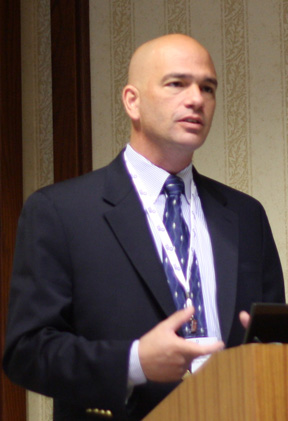 "People are now texting more than they are speaking on their mobile phones and this has to tell us something in the healthcare industry." said Frank Avignone, Senior Director, AllOne Mobile at the World Healthcare Congress' Wireless Health event in Boston last week. Avignone noted that wireless only households (homes with no landline phones) now make up more than 18 percent of U.S. households. (Some studies peg the percentage at north of 20 percent.)
"People are now texting more than they are speaking on their mobile phones and this has to tell us something in the healthcare industry." said Frank Avignone, Senior Director, AllOne Mobile at the World Healthcare Congress' Wireless Health event in Boston last week. Avignone noted that wireless only households (homes with no landline phones) now make up more than 18 percent of U.S. households. (Some studies peg the percentage at north of 20 percent.)
"When we first started down this path of wireless for healthcare there was a lot talk about the devices not being advanced enough or that there were not enough people who own mobile phones that can manage [these services]," Avignone said. "Now there are about 303 million people in the U.S. and 271 million wireless subscriptions. If you take into account the number of people in ICU who cannot use a mobile phone and the number of children -- I have a 7-year-old who can out-text me with her eyes closed -- that can't use a mobile phone that's an impressive number: That's almost two devices for every man, woman and child in this country. That's a channel we can see growing and continuing to grow not just here but around the world."
Avignone also pointed to what he described as "an unofficial study from New York and New Jersey" that found that five in seven Medicaid patients carry a smartphone. "Talk about a population we can save some money with," Avignone said.
Along with improving outcomes, saving money needs to be top of mind, too. Return on investment is the first challenge a health plan will put to a mobile healthcare company, Avignone said. The health plan will tell you that they have already spent tens of millions of dollars on "all this Web stuff" so they want to know what's the return on investment for mobile? Avignone said his answer to them is:
"What's your percentage of penetration for all that Web stuff? Who's using it in your population? And that answer will vary, but if you are going to have all that Web content that you have invested tens of millions of dollars in, it'd be nice if you had a way to get it to people. How do you get it to people? Obviously, the mobile channel," Avignone said.
"We have to coach these individuals," Avignone said. "The phone, the landline isn't going to work anymore. Email is not going to work anymore. And, certainly, a Web page is not going to work anymore."













